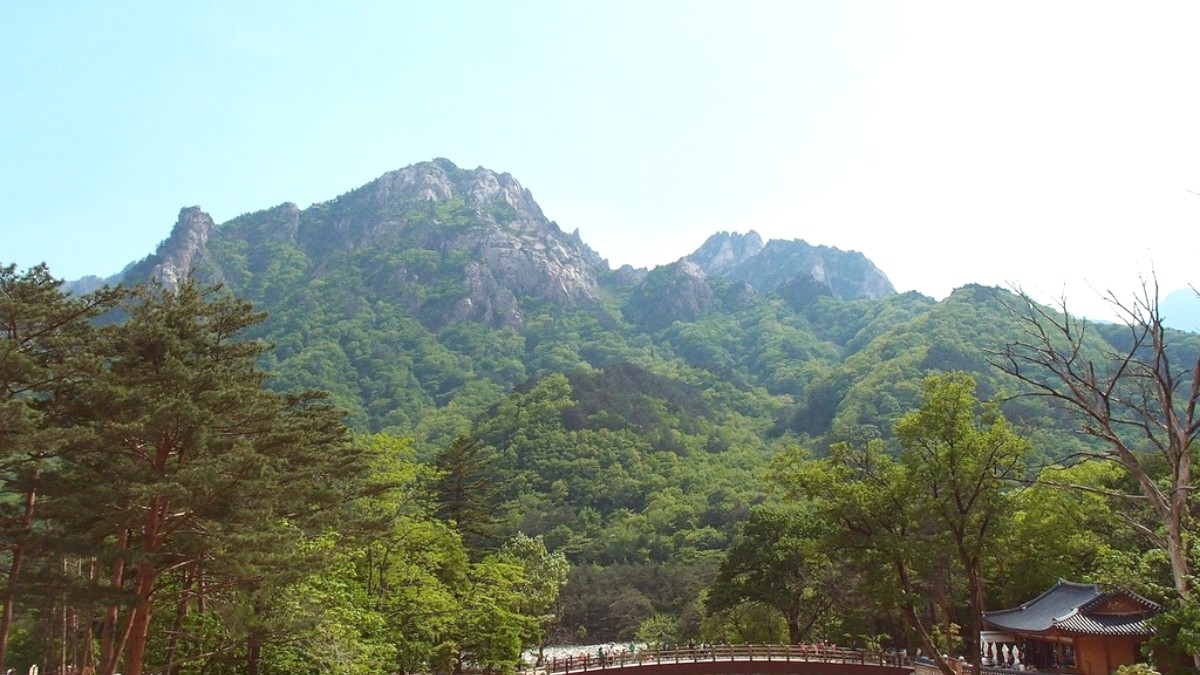
Gang Won Do, South Korea
A majestic rock formation with six granite peaks. Its name comes from a legend about its journey from Ulsan.
Access via a challenging 4km hike from Sinheungsa Temple, with steep stairs in the final section. Park entrance fee applies.
An ancient fortress site on a peak, offering panoramic views of the park, Ulsanbawi, and the East Sea.
Accessible by taking the Seoraksan Cable Car from near the main park entrance. A short walk leads from the cable car station to the peak.
Cable car fee: ₩15,000. Hours vary seasonally. Check Seoraksan Cable Car website.
Focuses on the history and culture of Sokcho and the surrounding Yeongdong region of Gangwon-do.
Collections include artifacts related to fishing industry and traditional life. Features Displaced People's Village.
A quirky museum displaying teddy bears in various poses and scenes, often depicting local culture.
Serves mainly as a family attraction.
The Sokcho Cultural Center occasionally hosts local performances or exhibitions.
Check their schedule for events during your visit.
A large lagoon in Sokcho city, with a promenade, the Expo Tower, and evening light shows.
Another scenic lake in Sokcho, with cycling and walking paths around its perimeter.
Discover less crowded, picturesque areas with unique natural formations and views.
Experience authentic local life away from main tourist spots.
Explore areas nearby that are less developed but offer unique experiences.
Visit Ulsanbawi early morning for fewer crowds and better light. Gwongeumseong is best on a clear day, early morning or late afternoon.
Weekdays, early mornings (before 8 AM), and late afternoons (after 4 PM) generally present fewer crowds for popular trails and cable car.
Autumn (mid-October) offers peak fall foliage but means very large crowds. Weekdays provide a better experience.
Winter shows stunning snow-covered peaks; bring appropriate gear for warmth and safety.
Capture the sunrise from Sokcho Beach or Yeonggeumjeong.
Photograph Seoraksan peaks reflected in Cheongchoho Lake.
Document unique structures and alleys in Abai Village, telling a historical story.
A travel tripod is useful for stable shots, especially for waterfalls or low light.
Sokcho Beach for swimming/sunbathing (summer). Kayaking/paddleboarding on Cheongchoho Lake (warmer months).
Rentals may be available locally.
Paragliding available in some Gangwon-do areas (Yangyang, Inje) through licensed operators.
White-water rafting is popular on Naerincheon River in Inje during summer.
Seoraksan National Park is home to Siberian flying squirrels, Korean gorals, and over 1,000 plant species.
Seoraksan is known for dramatic granite peaks (Ulsanbawi, Daecheongbong) and deep valleys carved by ancient rivers.
Limited live music venues in Sokcho, mostly small pubs or cafes that might occasionally host local musicians.
The Sokcho Cultural Center occasionally hosts local performances.
Nightclubs and dancing venues are virtually non-existent in Sokcho. Limited local bars.
Sokcho Jungang Market (fresh seafood, local specialties like Dakgangjeong) and Daepohang Port (seafood market).
Excellent for authentic local experience.
Local food: Dakgangjeong, Abai Sundae (vacuum-sealed), dried seafood. Seoraksan-themed items. Korean cultural items in larger shops.
Luxury shopping is not available here; for high-end, Seoul is the destination.
Support local vendors in Jungang Market and Abai Village. Your money directly supports the community.
Be mindful of purchasing any wildlife products. This is not typically an issue in Korea, but a good practice globally.
Post offices are reliable for international packages. Check home country customs for food items (dried seafood). Korea has duty-free allowances.
Always check official websites or local information centers for the most current hours, fees, and operational details for all attractions and services.